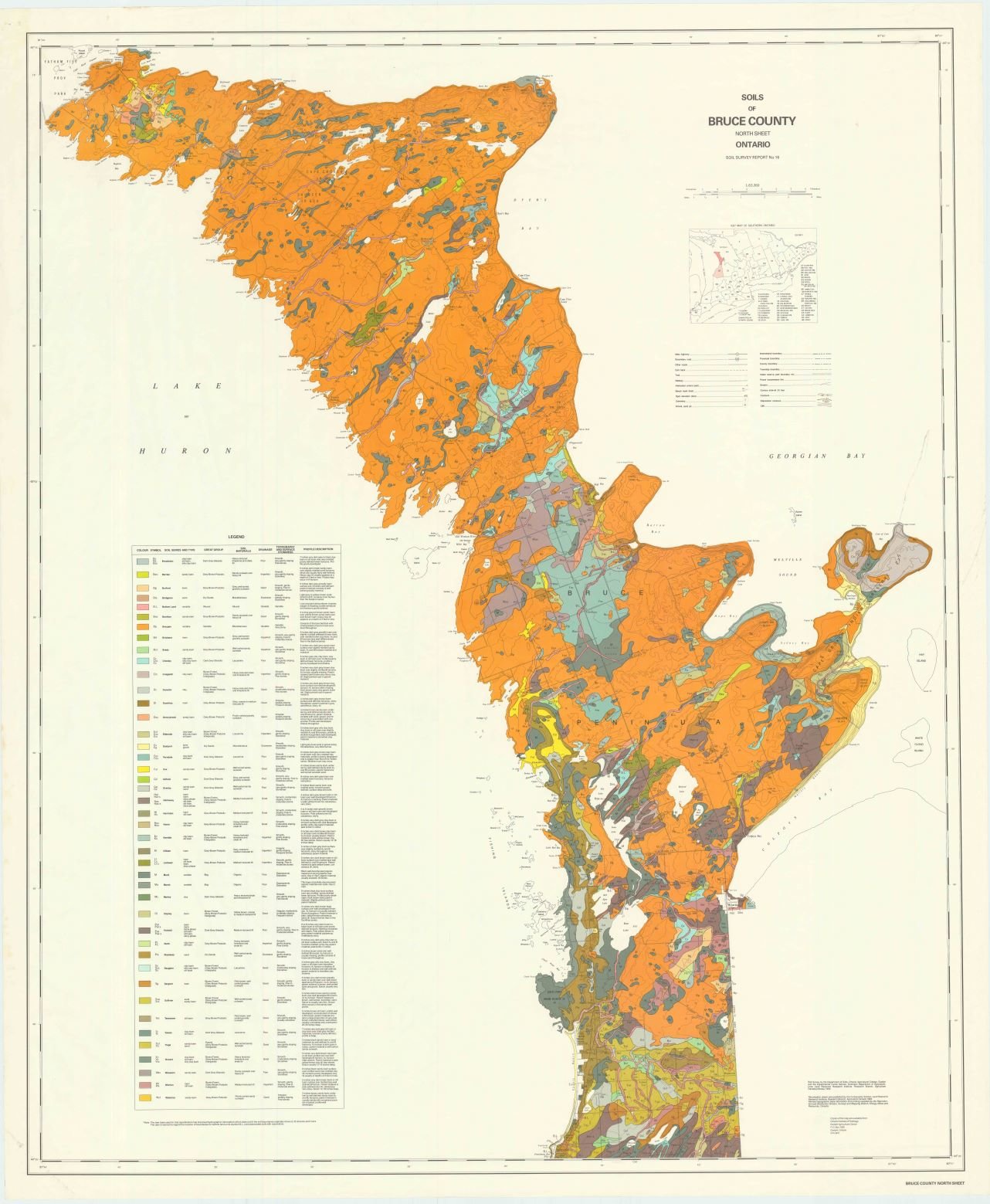Grey and Bruce counties offer an abundance of farmland. This blog post will provide a brief overview of soil types in the region. For more detailed information and soil maps (like those pictured below), visit Ontario’s Ministry of Agriculture, Food, and Rural Affairs soils web page.
What are the soil types in Canada?
Canadian soil is classified into ten different orders based on the surrounding environment and on the composition of the soil. The soil types found in Grey and Bruce counties is shown in bold font.
-
Chernozemic (grassland soil)
-
Solonetzic (grassland soil)
-
Podzolic (forest soil)
-
Luvisolic (forest soil)
-
Brunisolic (forest soil)
-
Gleysolic (water-saturated soil)
-
Regosolic (unstable slopes, sand dunes, floodplains, etc.)
-
Vertisolic (high clay landscapes)
-
Cryosolic (soil with permafrost)
-
Organic (Boreal Forest soil)
What are the soil types in Bruce County?
Three distinct kinds of soil occur in Bruce County: Grey-Brown Podzolic, Brown Forest, and the Dark Grey Gleysolic. The Grey-Brown Podzolic soils are the dominant well-drained soils in the area. The surface soil is generally 3 to 4 inches thick, dark greyish brown to very dark brown, moderately friable, slightly to moderately acid, and moderately high in organic matter.

In the northern part of the county, the Bruce Peninsula is dominated by the Breypen land type, which consists primarily of exposed rock outcrop with small pockets of soil materials. Based on the Canada Land Inventory, which classifies land based on farming potential, most of the Bruce Peninsula has no agricultural capability because of surface stoniness and bedrock outcrops, topography, and poor soil drainage.


 Facebook
Facebook
 X
X
 Pinterest
Pinterest
 Copy Link
Copy Link

